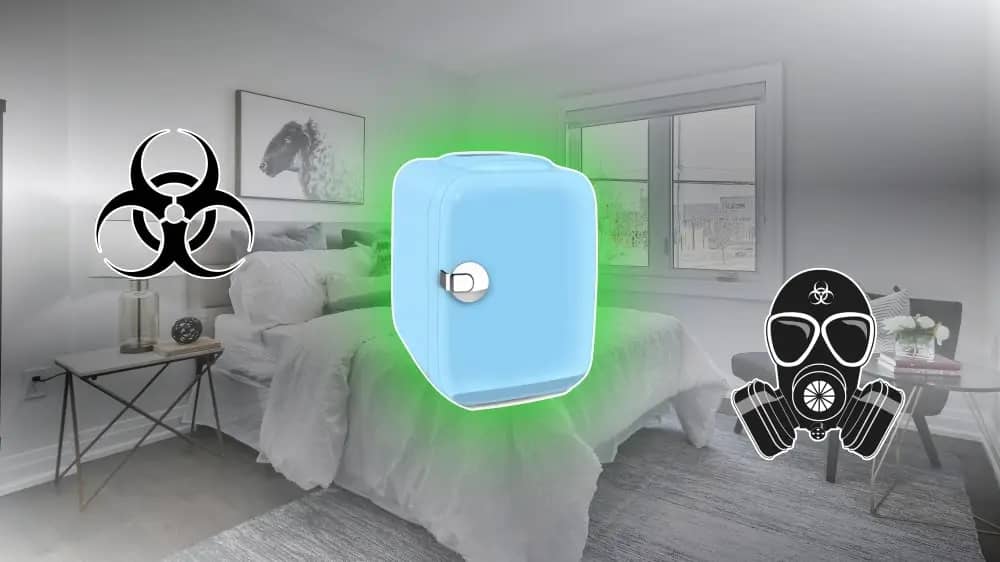Having a mini fridge in your bedroom or home isn’t usually risky, but some people do worry about it. We often get asked, “Do mini fridges give off radiation?”, because some of you would like to place your mini fridge inside your bedroom. Radiation is the least of your worries, because mini fridges, like most household appliances, emit what we call non-ionizing radiation.
What is non-ionizing radiation?
Non-ionizing radiation is a type of electromagnetic radiation that doesn’t have enough energy to remove electrons from atoms or molecules. This means it’s generally considered safe for humans. Unlike ionizing radiation (like X-rays or gamma rays), non-ionizing radiation doesn’t cause direct damage to DNA. However, high levels of some types, such as ultraviolet light, can cause skin damage.
How Does A Refrigerator Produce Radiation?
Radiation is a type of energy given off by a radioactive substance. It can be used to produce electricity in nuclear power plants. Radiation is also used in medical treatments for patients with cancer.
A refrigerator produces radiation when it uses coolant, usually gas, to cool down the food inside it. The gas absorbs heat and changes into liquid when it enters the refrigerator. As a result, this process releases energy that becomes radiation, and this radiation helps to keep the food cool inside the appliance.
The intensity of EMFs is determined by the voltage at which they are applied. Applying EMFs with a greater voltage results in higher intensity and vice versa. Electromagnetic radiation is made up of different frequencies (or EMFs) and the strength or voltage of the EMF determines its intensity and type.
Fridges today use about a tenth of the electricity that their predecessors did. They are also environmentally friendly and don’t create as much radiation as before. Any appliance that depends on an ongoing current poses some degree of risk.
Good to know: Mini fridges use significantly less voltage than regular fridges so are even safer than their big counterparts.
How To Measure Your Mini Fridge’s Radiation Rate
Mini fridges produce non-ionizing radiation which is not harmful. But if you are still worried about radiation you can measure your mini fridge’s radiation rate. The best way to do this is by using an EMF meter (electric and magnetic fields). This device is specifically designed to measure EMFs and will give you a reading in milliGauss (mG). Most of the EMF radiation coming from your refrigerator is magnetic but it’s important to monitor all three types: magnetic, radio and electric. The Trifield EMF meter recommended above can read all of these attributes.

Once you have your EMF meter, take a measurement and put it in the middle of your kitchen, at least 5 or so feet away from your mini fridge. Try to determine if there are any other sources around that may emit a large amount of EMF radiation like your cell phone, regular fridge, or microwave.
Most refrigerators produce a very small amount of radiation (<1-1.5 mG or Megahertz) and mini fridges release a fraction of that. The WHO recently updated its international ICNIRP Guidelines to limit exposure to larger RF electromagnetic fields ranging from 100 KHz (kilohertz) to 300 GH (gigahertz). Use the meter to make decisions and therefore limit your exposure to harmful radiation.
Conclusion: While most household appliances like mini fridges emit radiation, the rate shouldn’t be of concern to you because most appliances emit non-ionizing radiation which doesn’t damage DNA.

With over 15 years of experience in the appliance industry, I am a passionate advocate for efficient and stylish mini fridges. I specialize in energy-saving models and compact living solutions. As a certified appliance repair technician, I have a deep understanding of mini fridge maintenance and troubleshooting.

